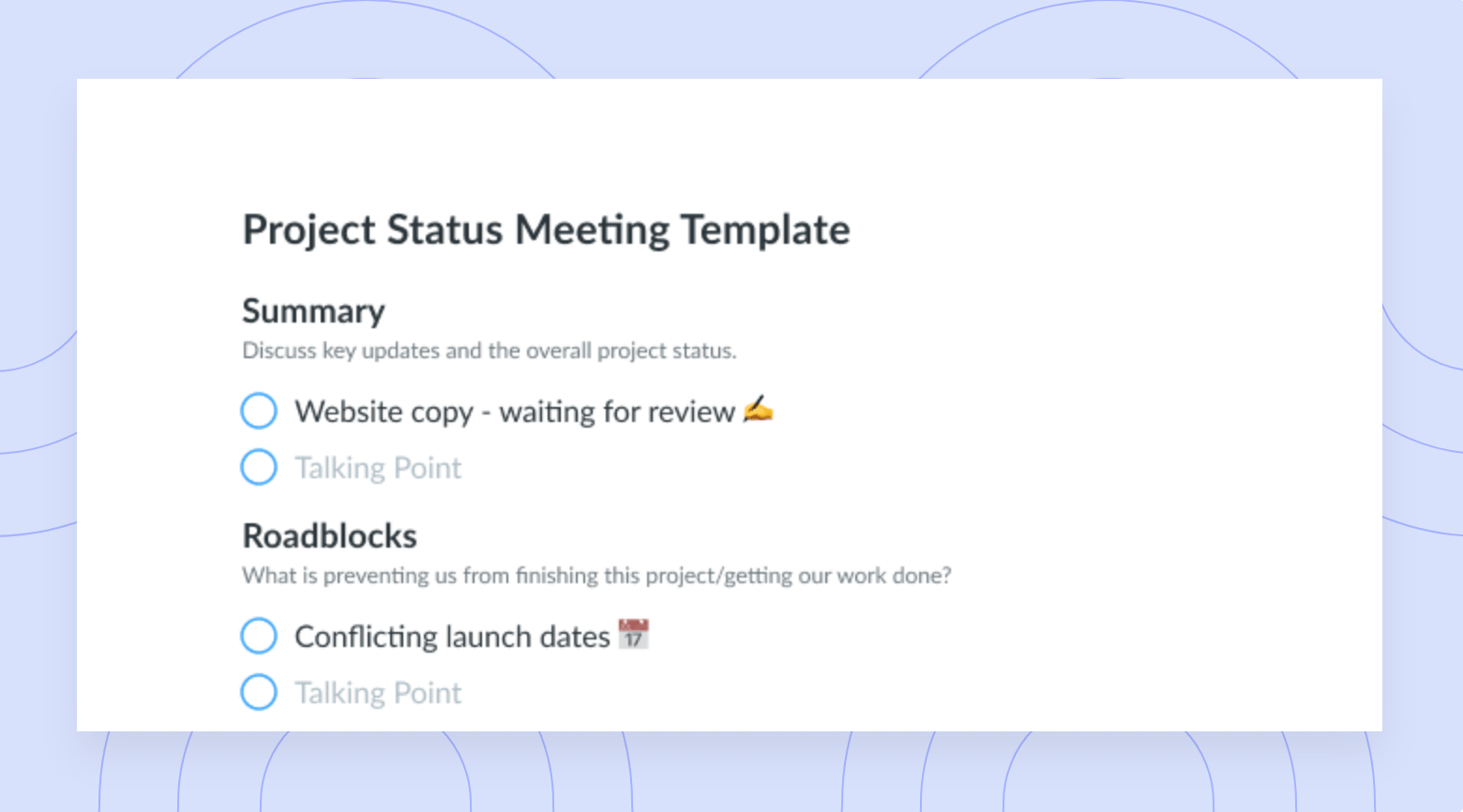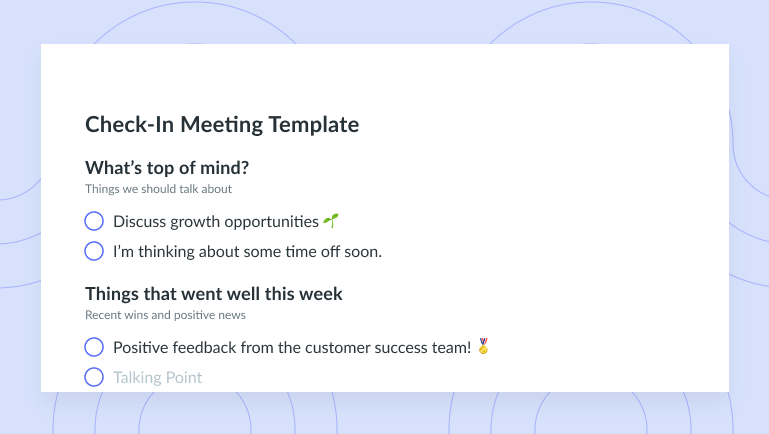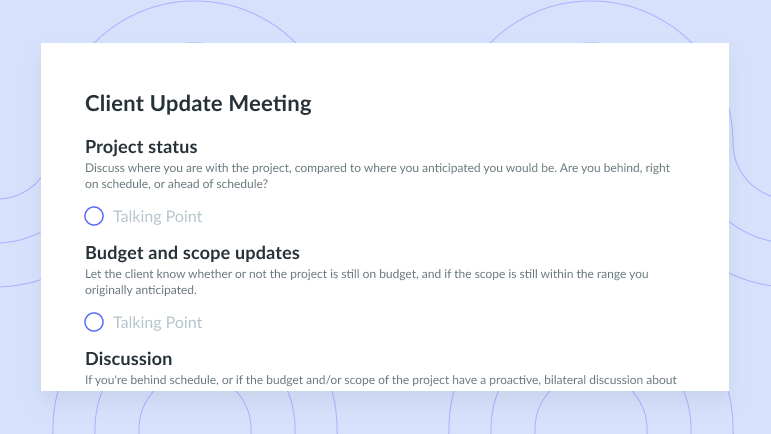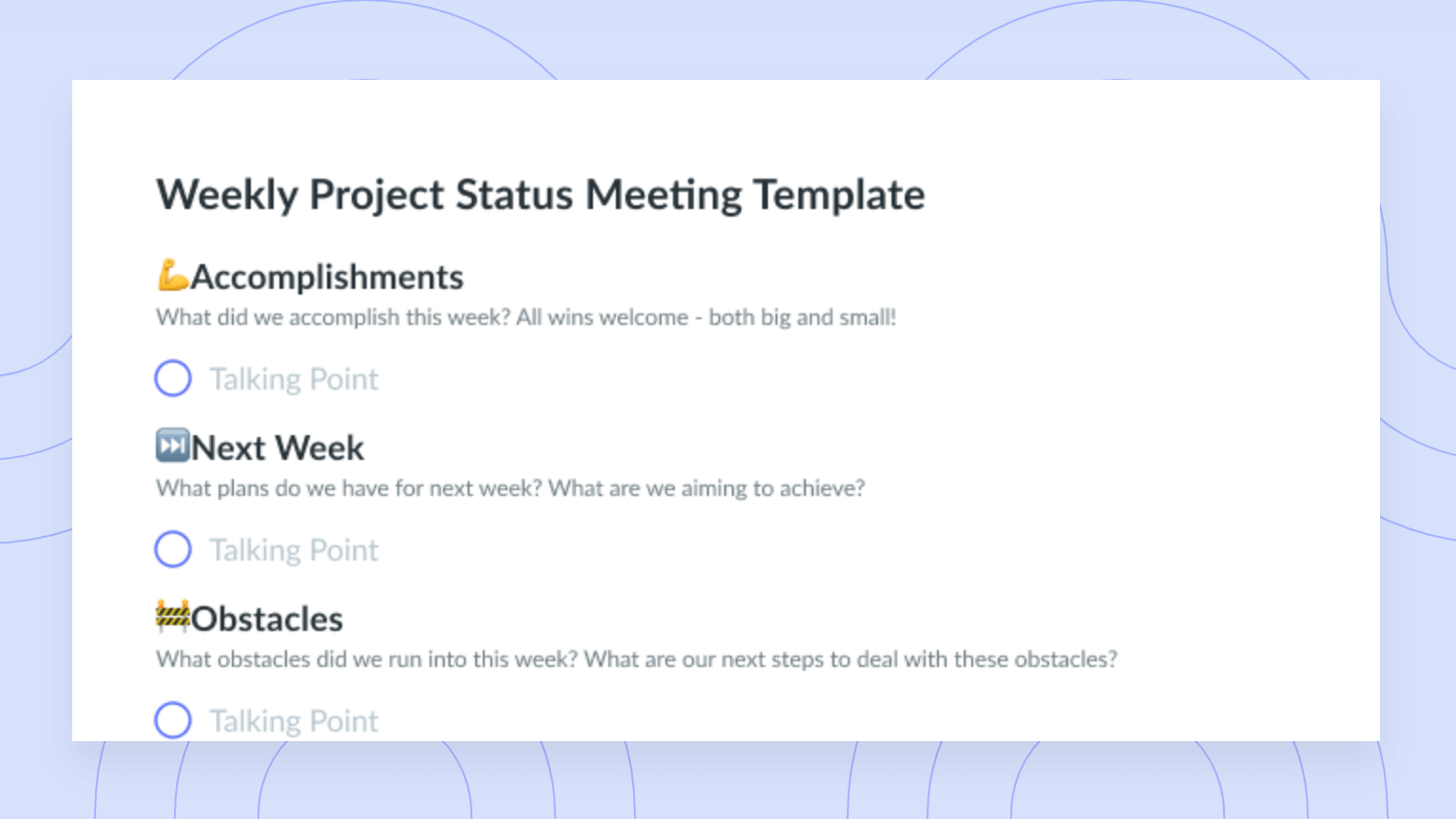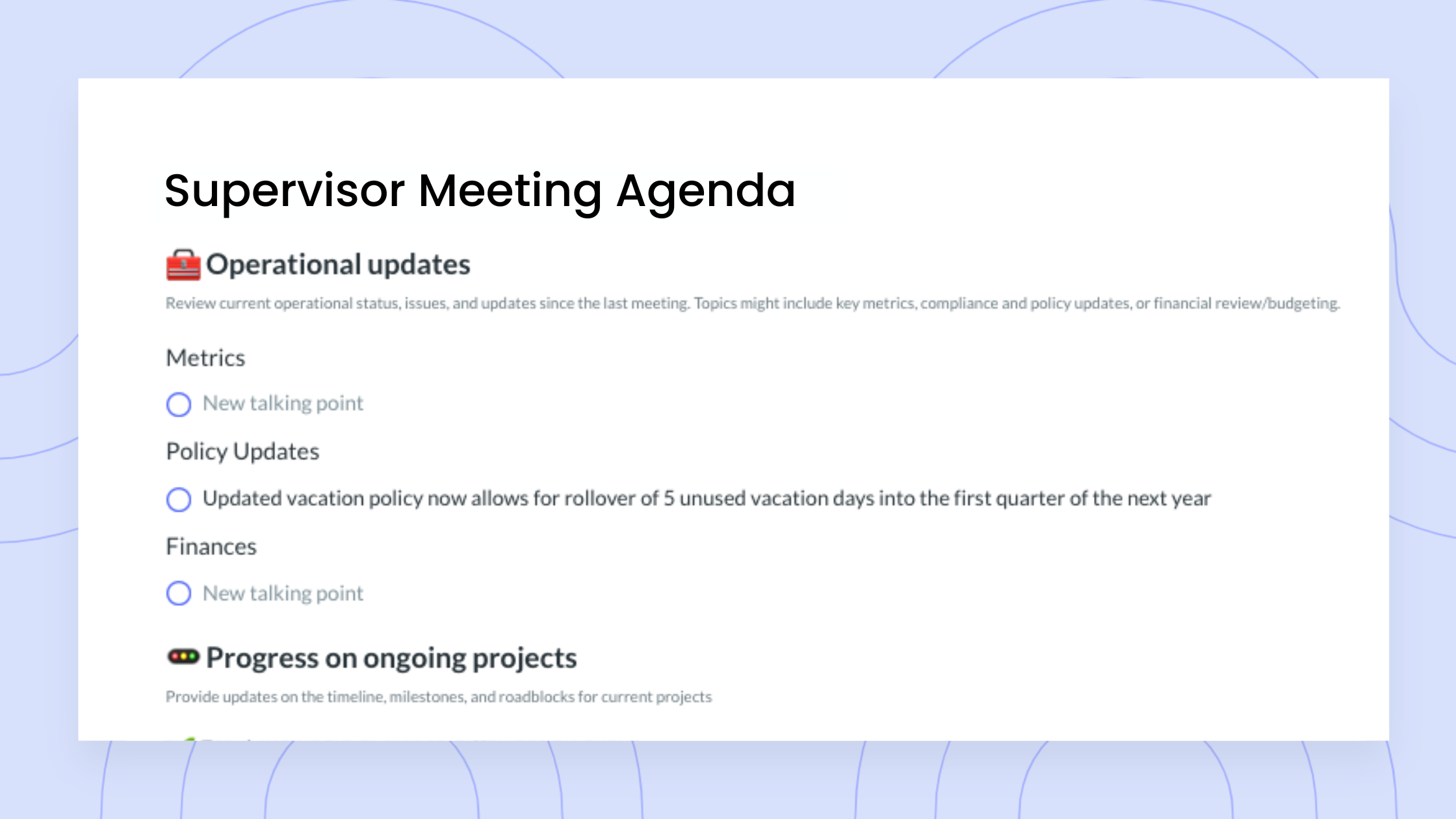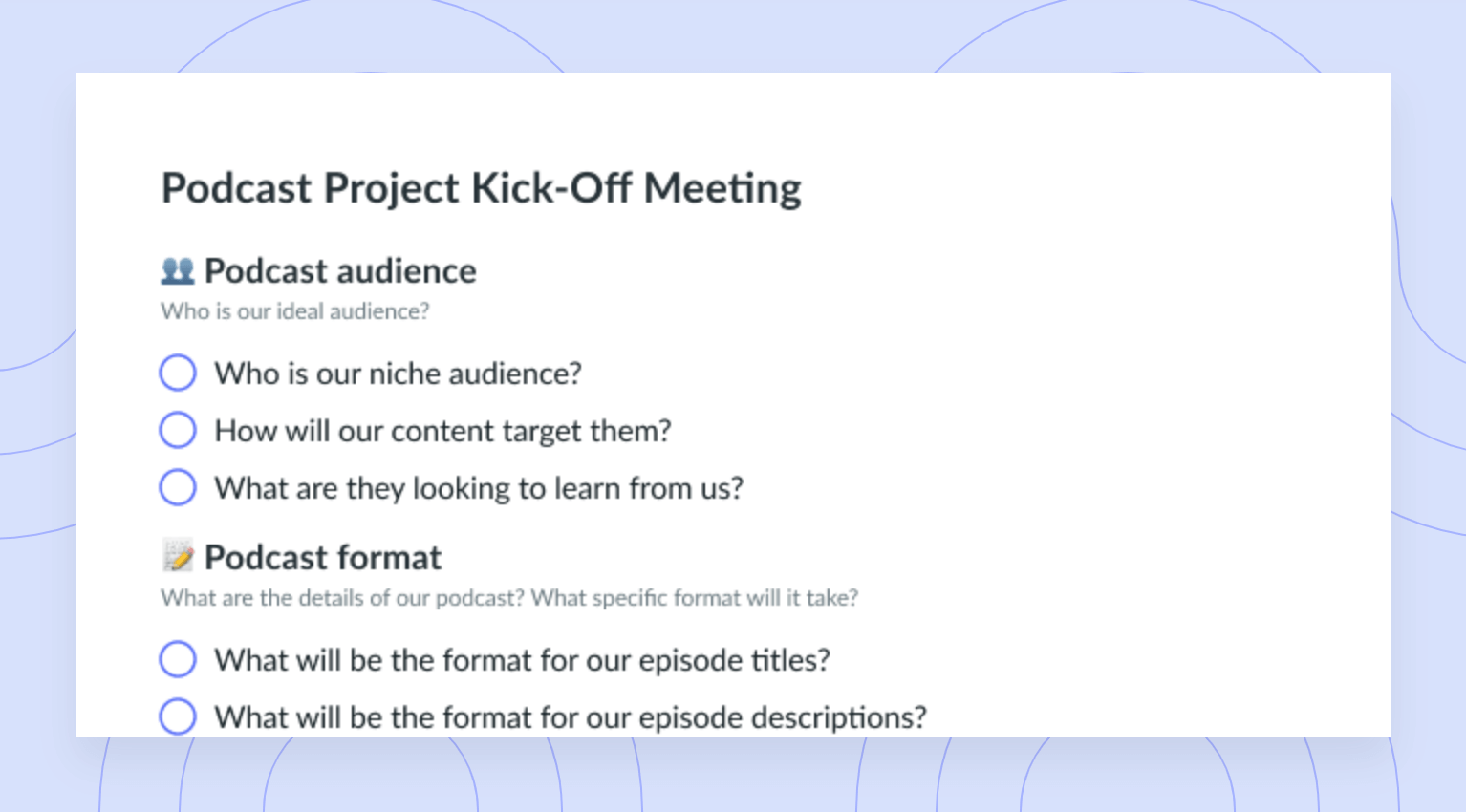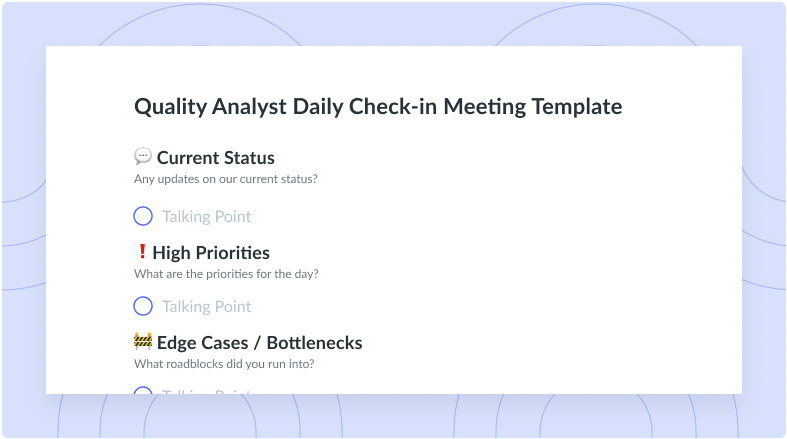Project Status Reports: The Go-To Guide for Managers
Learn to write clear and concise project status reports to keep everyone updated and on the same page.
Project team members have a lot on their plate.
And it’s not uncommon for them to log into their email every day and get multiple messages asking for updates on the various projects in the works.
Everyone interested in the details must receive the same update with all of the most up-to-date data, and to do this, you need to know how to create a project status report that dots all the is and crosses all the ts.
This, of course, is easier said than done, especially if you have multiple projects moving through the pipeline at once, all playing a part in the deadlines of other tasks. Knowing how to create a project status report, from start to finish, is crucial for project managers.
Let’s break it all down.
- What are project status updates?
- Why are project updates important?
- Types of project status reports
- What to include in your project status report
- Write your project status update
- Tips for creating project status updates
What are project status updates?
Product status updates are found within the project status reports, which detail the progress of an assignment or progress. This lets others know how close the project team is to accomplishing specific milestones or goals that are within the project timeline.
Why are project updates important?
So, why provide these updates in the first place?
Instead of constantly fielding a stream of questions, these updates provide project managers or stakeholders a high-level overview of the ins and outs of the project. When these status updates are provided properly, everyone is looped in and aligned, leading to fewer questions regarding how the project plan is progressing.
Everyone knows where everyone stands on the critical action items that need to be completed to achieve success. If something is bottlenecking the project and the team isn’t on track to accomplish specific goals, the update can also include what the team members are doing to resolve any blockers holding up the progress of a project.
Types of project status reports
There are various types of project status reports that you can send out to ensure complete transparency regarding where the project team is on hitting certain milestones. Which one you choose will depend on who the report is being sent to.
- Weekly Status Report (WSR): These reports are typically sent to the immediate team members, the manager of the project manager, a resource manager, or project stakeholders. A WSR includes as much need-to-know information as possible, providing a comprehensive view of the overall progress.
- Monthly Status Report: Monthly reports, or bi-monthly reports, don’t need the same level of detail as a WSR, as they can only provide a comprehensive report on progress. Because they’re usually sent to higher-level managers, these can include how the budget is tracking, how much is being spent, roadblock details, and any key deliverables. Nothing in a monthly report should come as a surprise to the reader.
- Quarterly Status Reports: As the name suggests, these reports are sent out every 3-4 months. They detail any highs and lows that the project has gone through, and the important milestones and deliverables that have happened over this time.
- External Status Reports: An external status report should include a highly professional tone and go over high-level goals and milestones. These tend to stick to broader issues rather than details about more minor aspects of the project.
- Internal Status Reports: Internal status reports will have much more information focused on the individual tasks and items the team is working on.
What to include in your project status report
If you’re writing a project status report and aren’t sure where to start, we’ve got you covered. There are certain details that should be included, no matter which report you decide to write up.
- Project and client name: This is probably a little obvious, but make sure the report starts with the project and client name always to know who the report is for and what project the report will detail about.
- Project vision: The report should also include the vision, which can be the overall goal of the project. Whether the goal is to redesign the company website or create a mobile application entirely, the visual will specify in a sentence or two.
- Project health: How is the overall project coming along? Is the team experiencing one blocker after the next? Are there budget concerns? Are you making every deadline with flying colors? The project health details if things are going well or if some improvements should be made.
- What we completed this time frame: If the project report is weekly, then it’ll highlight what has been accomplished in the last week — the same for a monthly review. This part is essentially a recap of what’s been happening since the last time a report was submitted.
- What we plan to complete next time frame: This area of the report will highlight what is expected to be completed next.
- Issues and roadblocks: Is something holding your team back? If there are any red flags, roadblocks, or obstacles that the team is facing, list them in the report.
- Upcoming tasks and milestones: What is right around the corner? If on Wednesday your team has a goal of having a new logo ready for the website, say so.
A step-by-step list to write your project status update
Ready to start writing the report? Here’s how to make sure nothing is missed, and the report is as clear and concise as possible.
- Determine the objective
- Know your audience
- Choose the format and type
- Collect your data
- Structure the report
- Edit draft
1 Determine the objective
First up, you need to know the point of the status update. Are you telling a key stakeholder that you’re over budget? Or maybe you’re informing them of some roadblocks and letting them know the plan of action. Whatever the case may be, start here.
2 Know your audience
Who is the report going to be sent to? Whether your manager will be reading it, clients, sponsors, or other team members, make sure you know that ahead of time. This way, you can know for sure how much information to include and what can be left out.
3 Choose the format and type
Next, you’ll want to determine if this will be a weekly report, monthly or bi-monthly, or if it’ll be an external or internal report. You’ll then select the format, meaning the order in which you’ll write the information. For instance, don’t move on from the section outlining obstacles without listing how you and your team plan on working past them.
4 Collect your data
Your status report doesn’t have to include every single data point and detail available. However, it’s a good idea to collect other documents, resources, and notes and provide links within the status report.
If a stakeholder in the project is looking for specific information, all of the details they need are just a few clicks away.

Pro tip
Use a meeting management tool like Fellow to have all your documents, resources, and notes organized in one place when using streams.
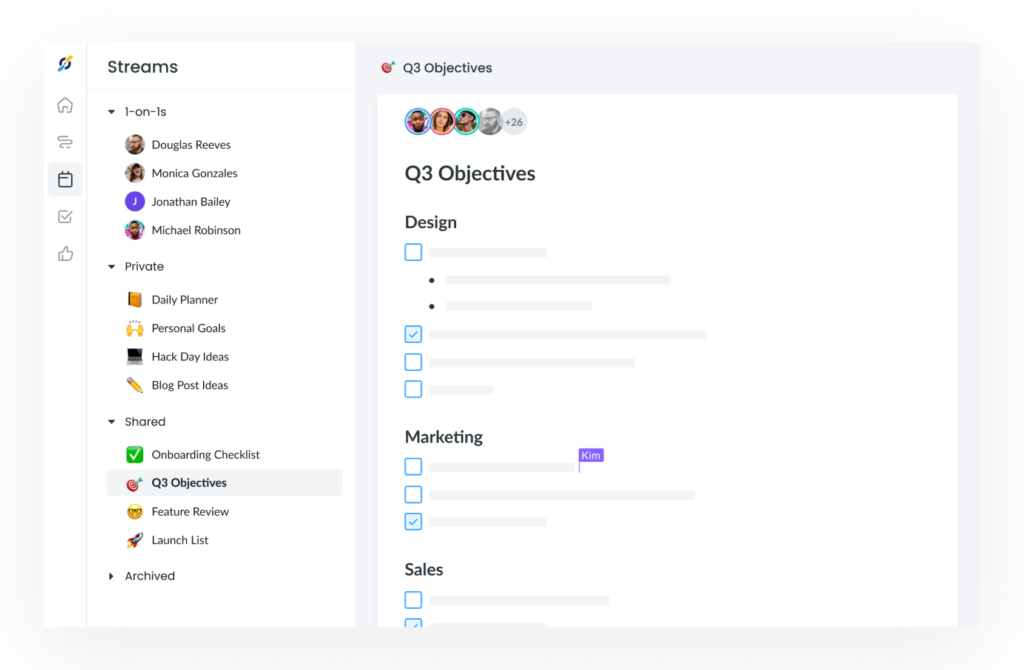
5 Structure the report
You may feel inclined to leave the so-called bad news for the very end of the report. Or you may decide to put it at the very top and rip the bandaid off, so to speak. However you choose to structure the report is up to you, but make sure that the report as a whole flows and is cohesive. Project management software can assist in making sure all of the data is structured to make sense and cover all of the essential details.
The last thing you want is for the reader to be at the end of the report and not feel like it was clear or that they don’t understand what’s going on with the progress update.
6 Edit draft
Everyone makes mistakes. But during a project status report is not when you want to make one. Have at least someone else take a look at your report before you send it off to clients, customers, or project stakeholders to ensure you didn’t make a glaring mistake, oversight, or leave something out that should have been included.
Tips for creating project status updates
Ready to roll up your sleeves and get started? Before you dive into creating a project status report, check out these tips to ensure nothing falls through the cracks.
- Keep it simple: Sometimes, a high-level look at the progress of a project is better than over-analyzing every last detail. Depending on the update you’re providing, it could be better to keep it more on the simple side.
- Consider different learning styles: Not everyone can read a graph and know exactly what’s happening with the team’s budget. Always include notes, links, easy-to-understand visuals, and links that can accommodate how everyone retains information.
- Always have a status meeting scheduled: How can you ever know for sure how a project is progressing with a status meeting on the schedule? No matter how often your team meets to discuss the details, always have the next one on the calendar.
- Utilize a status report on the go: Prepping your status report shouldn’t be something you leave until the very last minute. Consider making the most of a project status report template that you use every time, allowing you to fill in the details fast. Plus, if someone needs a status report ASAP, you’ll always be prepared with one.
Now you know how to successfully write project status reports. Thanks for visiting the Fellow blog and we will see you again soon!






![Status Meeting: 9 Best Practices For an Effective Meeting [+ Free Templates]](https://fellow.app/wp-content/uploads/2022/05/Status-Meetings-2.jpg)


